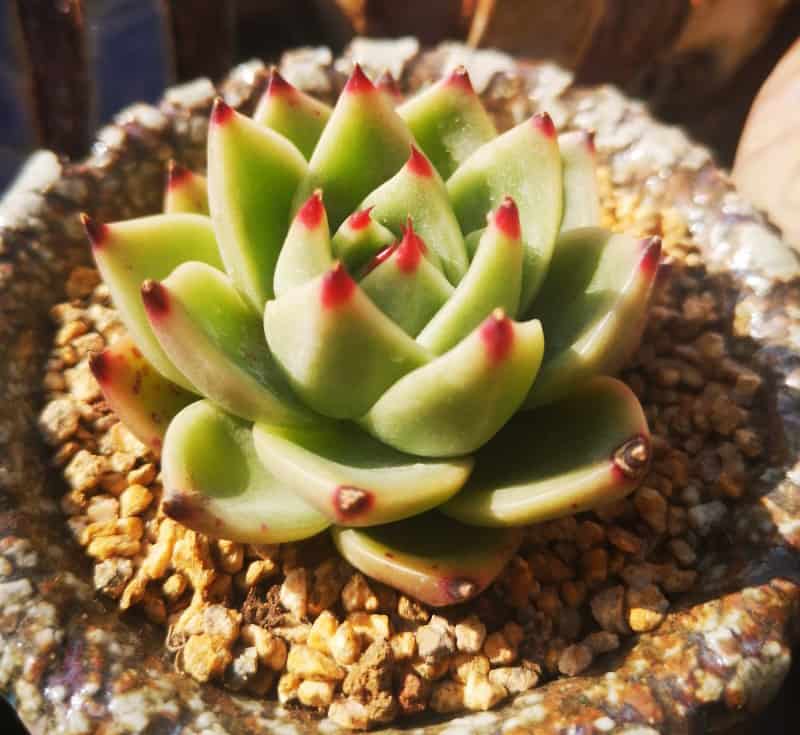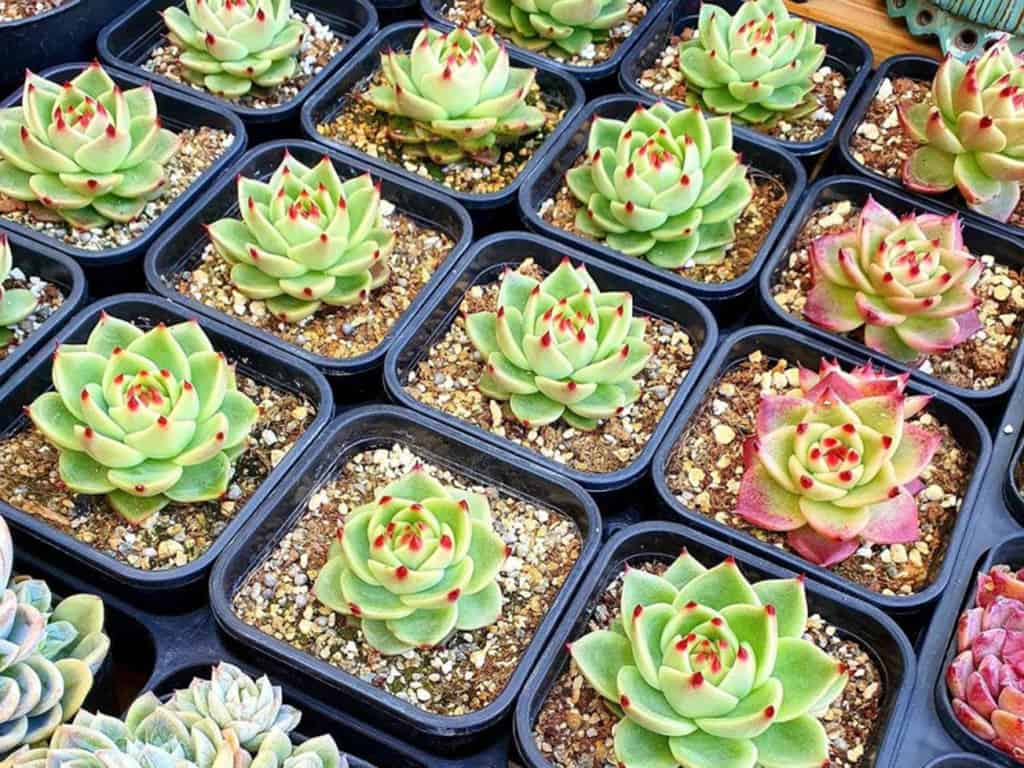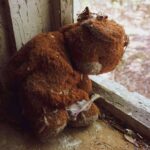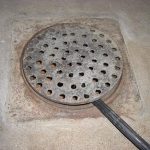Echeveria Agavoides(also called Lipstick Eceheveria) is a genus of succulent plants in the Sedum family.
Its leaves are plump and look like spoons. Usually, the leaf color is lime green, the back of the leaf will flush red, and the tip of the leaf will turn purple-black in the light and temperature difference of the environment.
The leaf surface is slightly concave leaf back triangularly raised, with a clear dragon spine line. The front of the leaves is either obliquely or sharply pointed and also has purplish-red stiff leaf tips. The plant has a standard rosette shape.

Echeveria Agavoides Care
Sunlight
Lipstick echeveria prefers an environment with a lot of light. If you are planting Lipstick echeveria, place it on the balcony.
If you want to have a healthy, perfect-looking Lipstick echeveria, it is best to ensure 4-6 hours of sunlight a day. A sugar heart will appear in the center of the plant and the color of the leaf tips will become darker in full light, otherwise, it will be very green.
However, it is worth noting that summer is the high-risk season for Lipstick echeveria. It is more prone to black rot water in the summertime, therefore, we have to prepare in advance when the summer is about to start.
When the light is strong and the temperature is too high, make sure to do the three steps of sun protection, cooling, and water break. Some places where summer starts early and lasts for a long time need extra attention.
Soil
Echeveria Agavoides, like other succulents, require well-nourished, loose, and airy soil. We can use about 60 granular soil with peat soil, bone meal, and humus to raise it.
This will meet the nutrient requirements of Echeveria Agavoides, but also ensure that the soil is loose and permeable, helping it to provide a dry and cool growing environment.
Water
Like most succulents, Echeveria Agavoides has its own growth period.
Spring and autumn are the growth periods of Echeveria Agavoides.
In these two seasons, it is particularly vigorous and grows very fast, so we have to give it more moisture and nutrients. Compared to the usual, we can water more appropriately.
Temperature and Humidity
Lipstick echeveria prefers cooler climates and dislikes long periods of sweltering heat and humidity.
In summer, when the temperature exceeds 86℉, it needs to pay attention to shade ventilation and water control. When the winter temperature approaches 32°F, it needs to be protected from the cold.
Fertilizer
We mentioned before that spring and autumn are the growth periods of Echeveria Agavoides, so if you want your foliage to grow fat, you can choose to fertilize properly in these two seasons.
Especially at the end of autumn, please give Echeveria Agavoides an overwintering fertilizer, it will grow very well in the coming year.
Echeveria Agavoides Propagat

How can we get more Lipstick echeveria?
We can choose to have ebony and chihuahua crosses and also propagate them by means of leaf plugs.
Pests & Plant Diseases
Lipstick echeveria is expensive to purchase and requires careful care.
Rust Disease
Large rusty brown spots will appear on the epidermis of its stem and expand upward from the base of the stem, and in severe cases, the stem will be covered with spots.
Physiological Diseases
If strong light is exposed for a long time, it can cause burns on the rootstock and leaf epidermis.
Insufficient light for a long time will cause the growing points to growing and the leaves near the roots to darken.
Sudden low temperatures can cause frostbite to some tissues.
Chronic water deficiency can cause apical shrinkage.



